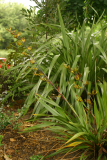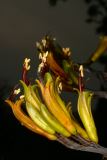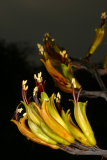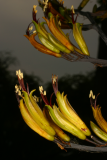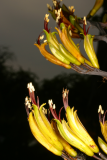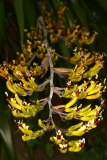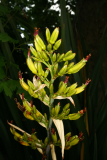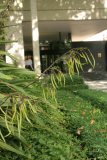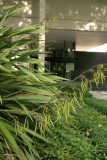Additional notes (click to expand)
Commemorative
named after the Rev. William Colenso FRS 1886, FLS 1865 (born 17 November 1811 - died Napier New Zealand 10 February 1899) printer to the Missionary Society who helped J D Hooker with his flora of New Zealand). Not to be confused with the Bishop of Natal John William Colenso (1814-1883).
Desmond, Ray. (1977). Dictionary of British and Irish Botanists and Horticulturists. Taylor and Francis, London. page 141
Apprenticed to a printer; printer to the British and Foreign Bible Society; sent by the Society to New Zealand (1834)and remained there for the rest of his life; established the first printing press in New Zealand; printed the New Testament in the Maori language; became a missionary; ordained to serve a church in Napier; travelled throughout New Zealand; MP for Napier (1861); Honorary Secretary, Hawkes' Bay Philosophical Institute (by 1883); died as a result of a carriage accident
Author of numerous Memoirs on the Botany & Zoology of New Zealand, & on the history, language, manners, & Customs of its native race, - published in the London Journal of Botany, Tasmanian Journal of Science & Transactions of the New Zealand Institute; Mr Colenso's labours as a Naturalist, Philologist & Ethnologist in New Zealand commenced half a centuary ago and have continued ever since - He was the first to record the discovery of the Dinornis [an extinct giant Moa over 3 metres tall) remains & he has contributed largely to a knowledge of the Flora & Fauna of the Islands.
Royal Society archives on line https://royalsociety.org/fellows/fellows-directory/
Medicinal
P. colensoi(previously P. tenax) has been used in traditional Maori medicine.
Flax-gum for healing wounds, chafed areas (Wall, Cranwell 1943).
Rhizome, leaf base: - poultice for boils. Decoction used for intestinal worms, constipation. Mixed with juice of kōhia berry, taken internally for flatulence (J. White).
https://rauropiwhakaoranga.landcareresearch.co.nz/ https://rauropiwhakaoranga.landcareresearch.co.nz/names/f7dbd5a8-9779-451f-ad75-72f1866c6e1b#:~:text=Flax%2Dgum%20for%20healing%20wounds,used%20for%20intestinal%20worms%2C%20constipation.
Nomenclature
Previously identified as Phormium tenax, a visitor recognised it by its yellow green flowers and pendulous twisted seed pods as being Phormium cookianum. Phormium tenax has red flowers and upright seed pods. However Kew have recently changed the name on the basis of priority to Phormium colensoi (named after the Rev. William Colenso printer to the Missionary Society who helped J D Hooker with his flora of New Zealand) as this name was validly published (but overlooked) on January 1 1848, and it was only given the name Phormium cookianum (named for Captain Cook) a few months later in the same year. Ours appears to be the lowland form from North Island with yellow-green tepals whereas the mountain form from South Island has red tepals
World Checklist of selected plant families on line https://wcsp.science.kew.org/
Geographical distribution
- Australasia, New Zealand, New Zealand North
Phormium colensoi
Family: ASPHODELACEAEGenus: Phormium
Species: colensoi
Common names: Small Flax Lily
Distribution summary: New Zealand
Habit: Perennial
Hardiness: H5 - Hardy; cold winter
Habitat: lowland to mountain forests
Garden status: Currently grown
Garden location: Plants of the World (B), Plants of the World (C), Southern Hemisphere Wolfson bed (N)
Reason for growing: Medicinal
.JPG)
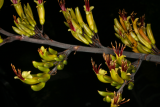
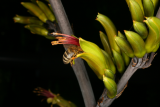

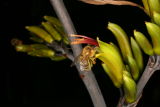

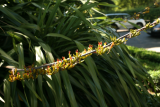
 North Island form.JPG)
 North Island form.JPG)

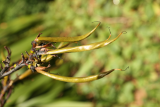
 North Island form.JPG)
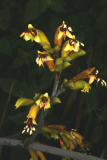
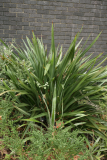
.JPG)

